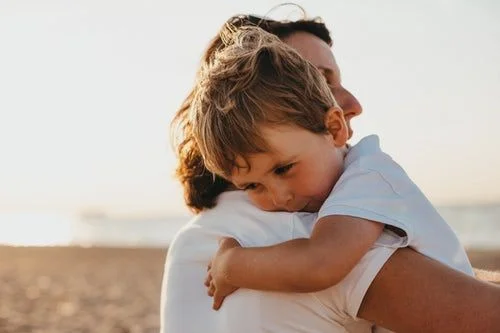Strengthening Bonds in Adoptive Families
The dream has finally become a reality. After years of longing for your child, filling out ridiculous amounts of paperwork, traveling near or far, and wading through seemingly endless uncertainty, your child is finally in your home and the adoption is now final! Words can’t express the overwhelming joy, gratefulness, and exhaustion an adoptive parent experiences when they can officially call their child their son or daughter and have them in their home.
Along with this overwhelming joy, adoption also often comes with overwhelming challenges. When a child comes into a home through adoption, parents are eager to bond. Parents want their child to trust them, to let them meet their needs, to give them comfort, to play with them, to let them in! But, the attachment-bonding process can often be difficult and longer than anyone expects. Parents know their child has already been through a lot and may find themselves fearing that their child will have disruptive behaviors, physical or mental illness, learning disabilities and delayed development. Parents can suffer under the stress, and family conflict can increase. Parents can also worry about how their children will understand their own story and develop a positive sense of identity. Parents long for the kind of bond that helps their child know they belong in this family and are loved beyond words!
As an adoptive parent myself, I was very encouraged to read the research about Filial Therapies and to utilize this in my own home. Over the past twenty years research on Filial Therapy (FT) has repeatedly proven to be evidence-based specifically indicating an ability to increase parent–child bonds and attachment. Not only can these modalities increase attachment, research has also indicated that FT decreases negative behaviors and increases children’s emotional intelligence and resilience. Filial Therapy can be done either with an individual family or in a group format. There are many great therapies that can help adoptive families, Filial Therapy is one of those great options!
In studies that specifically followed adoptive families using these Filial Therapies, parents reported that their children experienced:
More bonding and trust of parents
Less problematic behavior
Developed self-regulation skills (ability to self-soothe)
More ability to access and express feelings appropriately
Increased ability to ask for help when needed
Developed problem-solving skills
Mastery over fears (and other feelings)
A healthy sense of control
Increased self-control
Prosocial behaviors
Increased self-esteem
Less anxious or depressive symptoms
The parents also reported that they themselves experienced:
Less stress!!!
Feeling more bonded and attached to their children!
Feeling more empowered and confident as parents
More understanding for their children
History
Filial Therapy was adapted from Child-Centered Play Therapy (CCPT). CCPT was developed by Virginia Axline in the 1940s and continues to show positive outcomes in research today. It is still found to provide profound relief of symptoms for children. Developmentally, play is a child’s language, and toys are their words. Instead of talking out their problems, children will play out their problems while also strengthening the bonds to their parents.
Research shows that children who engage in CCPT:
Access, express, and accept feelings and desires
Increase locus of control and self-esteem
Develop mastery over fears
Work through frustration and/or past trauma
Are able to tolerate limits
Increase emotional intelligence
Practice problem-solving skills
In the 1960’s a therapist named Bernard Guerney was working at Penn State University, providing CCPT in the school clinic. As he walked through the waiting room, he noticed all the parents sitting there. At that time, parents were not involved in the therapy for their children. As he looked over the room, he began to think that these parents who love their children so much should be involved in their children’s care. So, Dr. Guerney and his wife, Louise, developed Filial Therapy. Years later, clinicians continued to develop individual and group models like Individual Filial Family Therapy by VanFleet, Filial Family Therapy (FFT) by Louise Guerney, and Child-Parent Relationship Therapy (CPRT) by Garry Landreth. All of these formats of FT teach parents to do CCPT with their own children, and children are able to experience the benefits faster with the involvement of their parents.
Is it hard to learn? Nope!
The great news is, these therapies not only work, but they are also easy to do! And these therapies can be used with children as early as age 2! As a therapist certified in Filial Therapy, I have used this therapy with many families and seen bonds strengthen and disruptive symptoms significantly decrease.
While the challenges of attachment in adoptive families can cause children to struggle and parents to despair, there is hope! The benefits of these therapies for adoptive families are vast. I invite you to reach out for help in navigating these unique challenges.
A Sample of the Research
Myrick, A. C., Green, E. J., Barnes, M., & Nowicki, R. (2018). Empowering nondeployed spouses and children through filial therapy. International Journal of Play Therapy, 27(3), 166-175. doi:10.1037/pla0000071
Sangganjanavanich, V. F., Cook, K., & Rangel-Gomez, M. (2010). Filial therapy with monolingual Spanish-speaking mothers: A phenomenological study. The Family Journal, 18, 195-201. doi:10.1080.10668920050137246
Smith, N., & Landreth, G. (2003). Intensive filial therapy with child witnesses of domestic violence. A comparison with individual and sibling group play therapy. International Journal of Play Therapy, 12(1), 67-88. doi.org/10.1037/h0088872
Swan, A. M., Bratton, S. C., Ceballos, P., & Laird, A. (2019). Effect of CPRT with adoptive parents of preadolescents: A pilot study. International Journal of Play Therapy, 28(2), 107-122. doi:10.1037/pla0000095
Tew, K., Landreth, G. L., Joiner, K. D., & Solt, M. D. (2002). Filial therapy with parents of chronically ill children. International Journal of Play Therapy, 11(1), 79-100. doi:10.1037/h0088858


